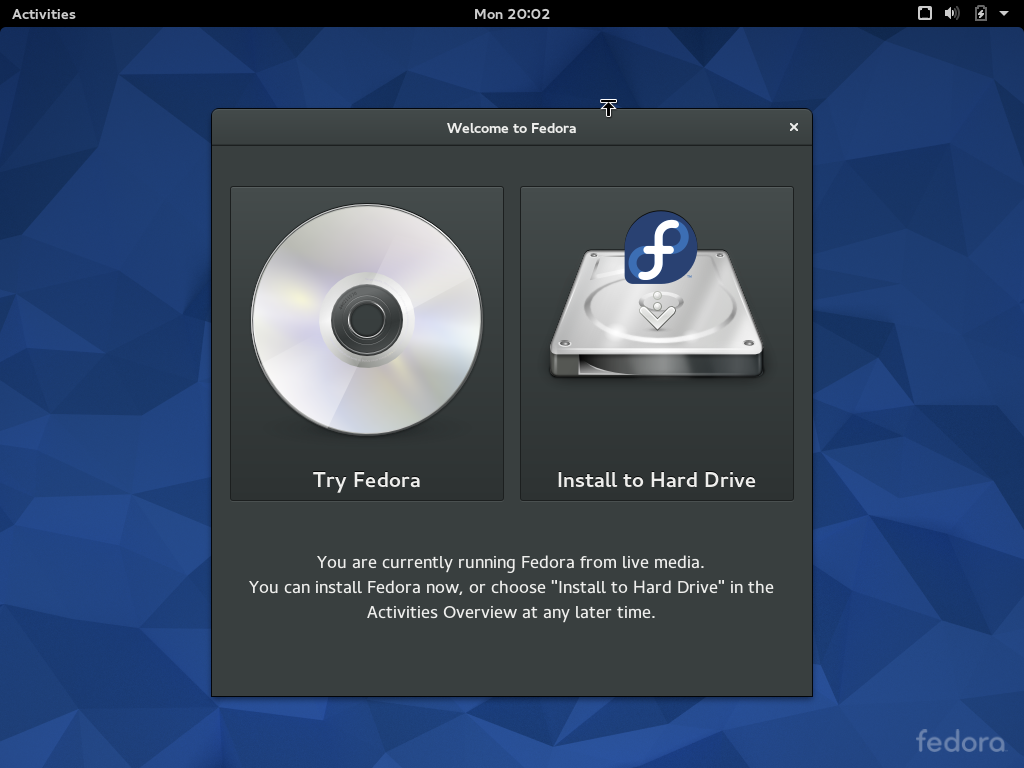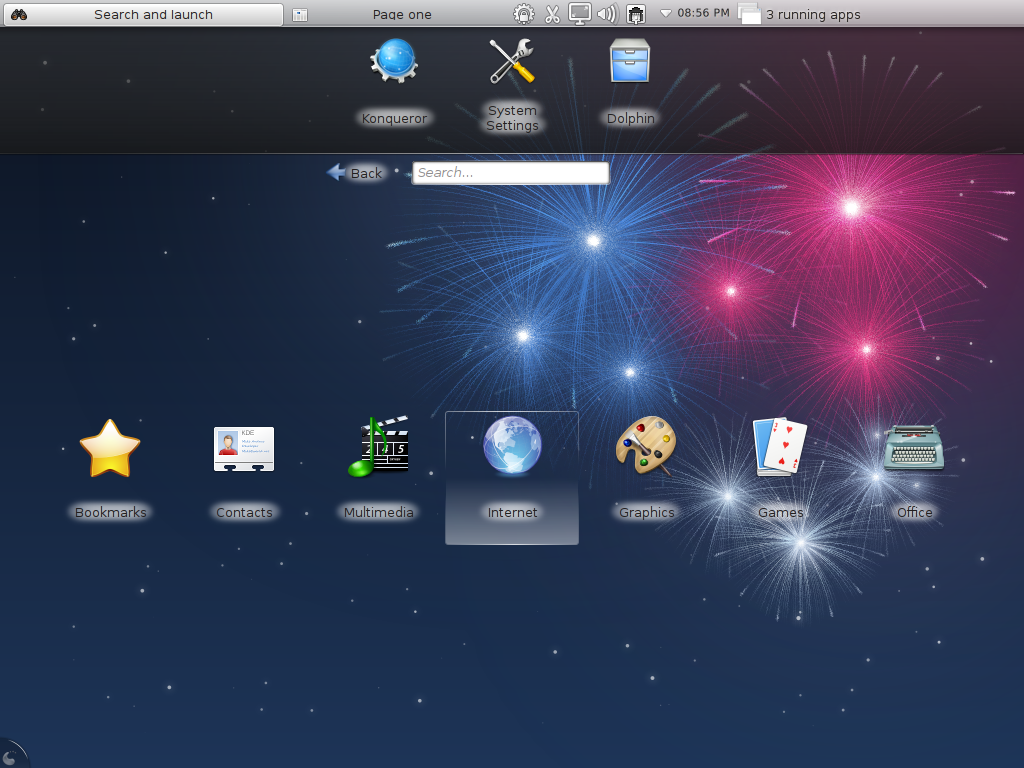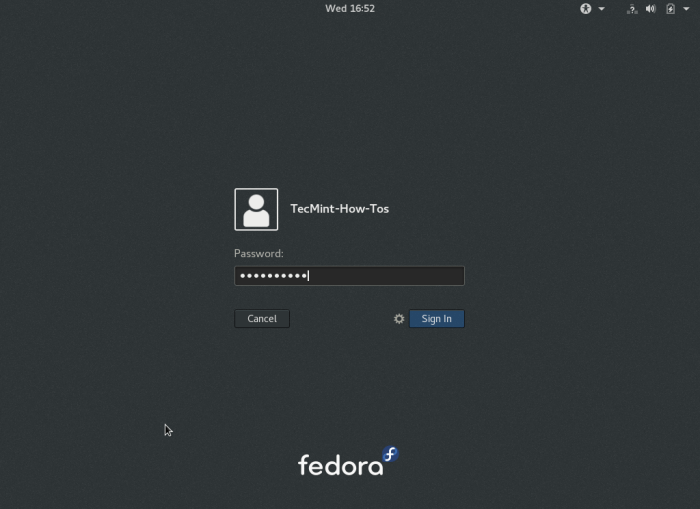

- FEDORA WORKSTATION INSTALL BLACK SCREEN DRIVERS
- FEDORA WORKSTATION INSTALL BLACK SCREEN UPGRADE
- FEDORA WORKSTATION INSTALL BLACK SCREEN FREE
FEDORA WORKSTATION INSTALL BLACK SCREEN FREE
These two commands install the free and non free repositories for RPM fusion. Sudo dnf install $(rpm -E %fedora).noarch.rpm To install RPM Fusion repo’s I ran: sudo dnf install $(rpm -E %fedora).noarch.rpm
FEDORA WORKSTATION INSTALL BLACK SCREEN DRIVERS
The Nvidia drivers are available in the RPM Fusion repositories. To do this I was able to use SSH but if this isn’t accessible you can enter recovery text only mode. To fix it I found I needed to install the Nvidia drivers. However since I didnt want to just stay on an old kernel version I wanted to find a solution Fixing the black screen issue I performed this by selecting the older kernel in the bootloader. I found that by booting into the old kernel the graphics would load. I knew that the operating system was working because I was able to both ping and ssh into the machine using: ping -t deathstarīoth ping and SSH would give me confirmation that the machine was online and working. Then after selecting the kernel on the bootloader it would fail to display any graphics. Later I then upgraded the operating system which upgraded the kernel.

Initially I installed fedora and the graphics worked fine. The symptoms of the black screen on Fedora This post describes how I fixed this issue. My machine would boot into the operating system perfectly fine but would have no image on the screen.

At the bash prompt, execute the following command to regenerate the grub.On my fedora system I found that after upgrading the kernel the graphics drivers wouldnt work.Save the file and exit the text editor (CTRL+x to quit, the press “y” and enter to save).GRUB_CMDLINE_LINUX="resume=/dev/mapper/fedora_da-netbook01-swap rd.lvm.lv=fedora_da-netbook01/root rd.lvm.lv=fedora_da-netbook01/swap nomodeset=0" Here’s an example of my line after editing (yours will look different): Feel free to remove “rhgb” and “quiet” if you’d like text boot. Locate the line with the variable “GRUB_CMDLINE_LINUX”, and add “nomodeset=0” to the variables.Use your favorite text editor and edit the file “/etc/default/grub” (I use nano which can be install by running “dnf install nano”):.Open a terminal window (Applications -> Terminal, or press the “Start” button and type terminal).Remove “rhgb” and “quiet”, and then add “nomodeset=0”įYI: “rhgb” is the kernel switch/option for redhat graphical boot, and “quiet” makes the system messages more quiet (who would have guessed).The line should finally end with “rhgb” and “quiet”. Scroll down until you get to the line starting with “linux16”, then use your right arrow key and scroll right until you get to the end of the kernel options (while scrolling right, you may scroll multiple lines down which is fine and expected).When the GRUB bootloader appears, press the “e” key to edit the highlighted (default) boot entry.Power on the computer, and carefully wait for the GRUB bootloader to appear (the boot selection screen).
FEDORA WORKSTATION INSTALL BLACK SCREEN UPGRADE
This issue occurs with GNOME on my old HP Mini 210 Netbook every time I do a fresh install of Fedora on it (or upgrade it).įollow the process below to temporarily boot and then permanently fix it. The cursor will not move and there will be no drive activity. After doing a fresh install or upgrade of Fedora Core Linux (FC28 in my case, but this applies to any version), you may notice that when the system boots it gets stuck on a black screen with a white cursor.


 0 kommentar(er)
0 kommentar(er)
